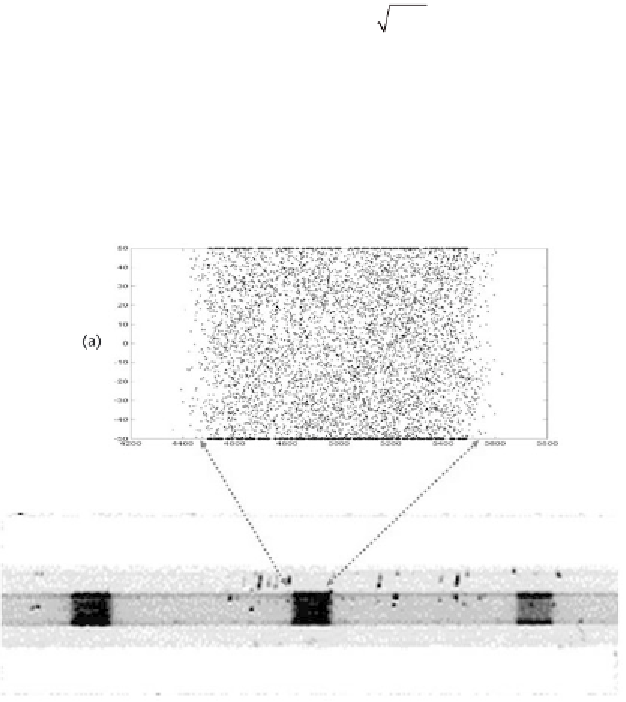Biomedical Engineering Reference
In-Depth Information
onds. During the time
t
, axial diffusion is not significant as we can show by using
a very simple Monte-Carlo approach [Figure 5.19(a)] and is confirmed by experi-
mental observations [Figure 5.19(b)].
We may assume a uniform concentration in primers in any annular volume
delimited by the initial functionalized regions (volume
V
=
p
R
2
a
, where
a
is the
length of a region). After the time
t
, the primers are homogeneously scattered in the
different annular volumes. The second step consists in calculating the concentration
of the primers as a one-dimensional diffusion phenomenon. For each primer
i
, we
have
2
¶
c
¶
c
i
i
=
D
(5.35)
i
2
¶
t
¶
z
An analytical solution to (5.35) is given by the following combination of error
functions [4]
é
ù
æ
ö
æ
ö
1
2
a
-
z
a
+
z
i
i
c
=
c
ê
erf
+
erf
ú
(5.36)
ç
÷
ç
÷
i
i
0,
2
D t
2
D t
ê
è
ø
è
ø
ú
i
i
ë
û
In Figure 5.20, concentration profiles of two neighboring primers with different
coefficients of diffusion have been plotted. It is immediately seen that a spacer gap
must be introduced between the two regions to prevent cross mixing.
The advantage of the analytical solution is to produce an expression of the re-
quired spacing between the functionalized regions. Suppose that the concentration
Figure 5.19
(a) Diffusion of primers from the wall after 6 seconds (obtained by a Monte-Carlo
simulation). The starting location of the primers has been randomly chosen on the walls. The dif-
fusion outside the annular volume is negligible in this time interval. (b) The experimental view of
diffusing fluorophores.








